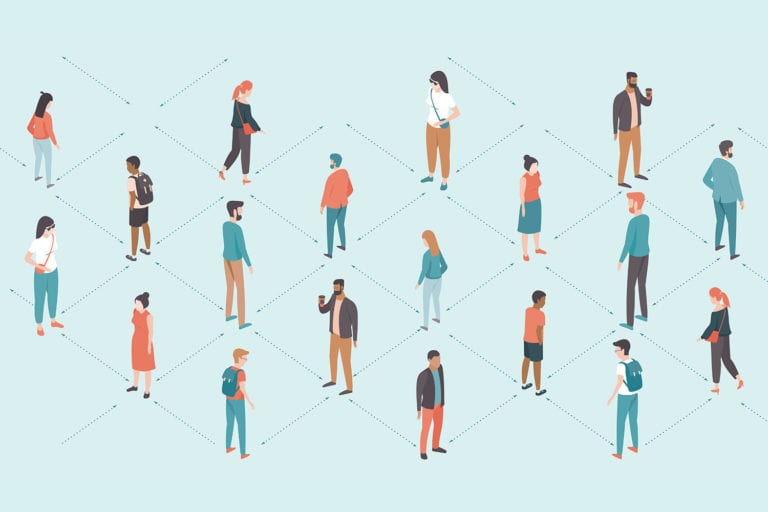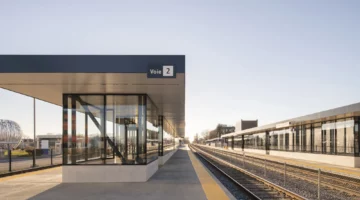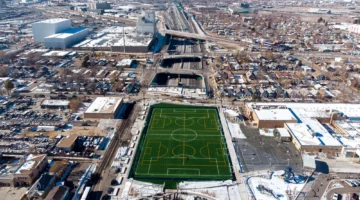Experts in people-flow modeling and workplace behavior analysis at Buro Happold have valuable insight about the challenges of returning to the workplace, including open-plan offices.
Over the last decade, the firm has used sensors and IoT to study data on environmental conditions and anonymized people locations in real-time. An animation demonstrating the method helps explain how it works.
Buro Happold's main finding: For the foreseeable future, current workplace models including assembly lines and the open-plan office — and many other types — are untenable. These settings are "not conducive to social distancing,” says Sharma.
The firm’s Shrikant Sharma, head of analytics, wrote about this in an essay:
"As the world continues its battle with Covid-19 we are also dealing with uncertainties. How long will the lockdown continue? Is social distancing temporary or will it stay with us beyond the pandemic? When will we return to our workplaces, and when we do, how different will it need to be?
It is likely that for most of us, the return to work will be gradual with a degree of social distancing in effect. Buro Happold has been looking at how analytics and insight from real-time data can help us plan, design and operate better, people centred workplaces.
Our Workplace Analytics team wanted to see how ready a typical organisation is to implement social distancing. Over more than a decade we have been researching behaviour of people within the workplace; how they use spaces and what makes them productive. We use this data to empower organisations so they can better utilise their buildings, increase collaboration, and improve productivity and wellbeing.

Deeper insights can create better workplaces
Sensors and Internet of Things (IoT) devices are providing data on environmental conditions and anonymised people locations in real-time. This data gives us unprecedented insights into our behaviour within a workplace, for example how often people leave their desks for a break, where they bump into each other and start a conversation, and how long a ‘one-hour meeting’ actually is. Deep analytics then helps us build a complete picture of how effective a workplace is in terms of its space utilisation, environmental and energy efficiency, and, most importantly, connectivity, productivity and wellbeing of its people.
From our existing data sets, by analysing distances between people, we found interesting insights into what it would take to implement effective 2m / 6ft social distancing.
Imagine an invisible 1m radius circle around everyone as they go about their daily activities in the office. If the distance between two people is more than 2m then the circles don’t intersect, and they stay green. When the circles touch or intersect the social distancing is violated. So, we reran the same movements of people captured using sensors, this time plotting the circles over the dots as they move around the office.
What we find from the above snippet of typical office movement is that most of the circles are red most of the time. They are red in the desk spaces, meeting rooms, corridors, and hotspots like the entrance and café areas.
This shows that the current workplace model is not conducive to social distancing. In the interim period one could achieve social distancing by phased return, occupying fewer desks within the same office, with robust communication on maintaining social distancing and sanitation. However, to achieve a resilient and responsive workplace in the longer term, organisations we need to rethink the design of the workplace entirely.
Designing for our future working lives
As people, systems and organisations get accustomed to remote working it is likely that 100% office-based working will be a thing of the past. How will organisations respond? Will many of our workplaces extend beyond the physical world and into the virtual? Would we still layout the office in a conventional manner? Would hot desks become the norm and fixed desks disappear completely? Would the purpose of the physical workplace be solely for meetings and interactions? From internal air quality to measuring the power of our virtual connectivity, in the coming weeks we will explore how we can and need to use data, science and evidence to design better workplaces for all.
In the interim we need to think immediately about how we can use our existing workplaces effectively and safely as the workforce returns to work. We used our predictive modelling engine to scenario plan how an office at 20%, 40%, 60% and 80% occupancy may be able to deal with social distancing.
The results show that beyond 40% a occupancy rate revisions to desk layout and high footfall areas will be needed to enable effective social distancing in the workplace.
Covid-19 will change our workplaces forever. Analytics and insight from the data emerging from remote working during the lockdown, together with predictive modelling tools, will prepare us better to deal with this uncertainty. We can turn this challenge into an opportunity to build workplaces of the future that are responsive, flexible, resilient, and most importantly, people centred.



